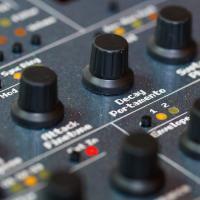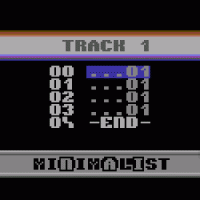-
Posts
22 -
Joined
-
Last visited
-
Days Won
1
BulletZ last won the day on November 12 2020
BulletZ had the most liked content!
Profile Information
-
Location
Over there
-
Interests
Tinkering and making things
Recent Profile Visitors
857 profile views
BulletZ's Achievements

MIDIbox Newbie (1/4)
2
Reputation
-
It's probably my paranoid bias of seeing too many people on the internet using other people's work and completely ignoring the license this work was published under. Apologies for over-reacting ;)
-
I see the PDFs of the PCBs are available and they're rather simple. If someone cares enough it shouldn't be very hard to reproduce.
-
Yeah well. I'm not a native speaker and your wording was kind of elusive, if you don't mind me saying. "Don't waste your time insisting on the TAPR license" could be understood as "don't waste your time insisting on the TAPR license [because we don't care about it (the license)]". Hence my surprise. Seems what you were saying is "it is your right to try to enforce the TAPR but it wouldn't be the most productive use of your time", and I guess we can all agree on that :)
-
Forgive me if I'm dense but I don't see where the difference is, unless you are suggesting that licensing terms are "à la carte": you get to pick what matters? For the sake of clarity I hold no particular opinion on the many arguments I've read in the previous comments: while I'm disappointed this run won't happen, the arguments exposed here all have some merits and in the end it's no big deal (that it's not happening). But your comment about "not insisting on licensing terms" I find very disturbing, both as a licensor (of my own work) and a licensee (of others') myself.
-
Wait what? It's okay to ignore licenses now?!
-
I am familiar with active mixers, that's why I proposed one. As I explained in my initial post, the point here is to be cost-effective, and require as little mods to the initial design as possible. The MB6582 doesn't have a negative rail so that rules out cheap OpAmps designs. in any case the proposed design is imho a significant improvement to the current situation (passive mixer with very high crosstalk), since it does essentially remove all crosstalk, which was my primary goal. I'm curious whether adding an active mixer to the MB6582 is of any interest (and if so, if my proposed design is a step in the right direction), in which case I could e.g. add volume control.
- 6 replies
-
- mb-6582
- active mixer
-
(and 1 more)
Tagged with:
-
Err, what? The proposed circuit works. I was asking for comments, not a 101 on OpAmps.
- 6 replies
-
- mb-6582
- active mixer
-
(and 1 more)
Tagged with:
-
So what's up with this? Is this happening eventually?
-
no comment?
- 6 replies
-
- mb-6582
- active mixer
-
(and 1 more)
Tagged with:
-
Hi there, I don't know if something like this has been proposed already but if it hasn't, here's a simple two-transistor virtual-earth summing amplifier for the mixer output of the MB6582. It's suboptimal in many ways because I wanted to keep it simple and cheap (and try to use as much as possible existing components value from the main project, e.g. BC547, 10uF caps, etc). I wanted to make it so that it did not require any modification of the existing hardware to work (including running from available voltages), and I also wanted to keep its PCB footprint small in case someone wants to add it to the MB6582 PCB. I think the schematics is pretty self-explanatory, the general idea here, as with all virtual-earth summing systems, is to basically have 0Vp-p at the summing point to reduce crosstalk between channels. The setup is a two-stage tansimpedance amplifier: T1 turns current at its input into voltage and is buffered from the output via the voltage-follower T2. The bootstrap capacitor C3 improves linearity and reduces bus residual. The existing mix resistors are pictured as RM1-RM8. This circuit has a lot of shortcomings, but since we're not exactly going HiFi here, it should still deliver much better results than the original passive summing system which had some severe crosstalk. It should also be fairly easy to add a volume control stage to that mixer output. Note: this is an inverting stage: the output phase is reversed. I wasn't entirely sure where to set the mark for the gain: the circuit will hard clip at around 4.8Vp-p input, 10Vp-p output. I've done some very basic (read: almost none ) testing with my MB6582 and it seems to do the job. Comments welcome. By the way, speaking of comments, I'd have two suggestions for the MB6582 PCB: Please add thermal relief on the ground plane: soldering the ground pins at safe temperatures, even with a 80W iron, is really not easy without them. While ENIG looks beautiful, it's really not DIY friendly either: HASL is much better in that regard: it has excellent component wetting. ENIG only has the upper hand if you have a lot of SMDs and need perfect surface level, which is not the case here. My 2c ! Cheers, T. mixer summing.pdf
- 6 replies
-
- 1
-

-
- mb-6582
- active mixer
-
(and 1 more)
Tagged with:
-
BulletZ changed their profile photo
-
Thank you :) That's indeed the general idea ;) Best, T.
-
For the record, it's coming alive: http://hacks.slashdirt.org/hw/exsid/ ;)
-
Actually, what jsm was referring to is 'digis'. Samples generated within the SID, typically by modulating the volume register at high speed (though other, more recent methods exist). And no, it will never be possible to do this on the MBSID because that requires changing the SID registers at a pace that is simply not possible to achieve over MIDI. That said, I'm working on a pet project to build a USB SID playback device that would be driven by SIDplay, a la HardSID. I've got a working proto but there are still quite a few things that need to be ironed out. Digis playback is one of the required features :)
-
vielen Dank!
-
Hi nILS, seems like I can't edit the wiki either (login denied). Would you mind adding me to the list for 1 sammichFM? Thanks!




